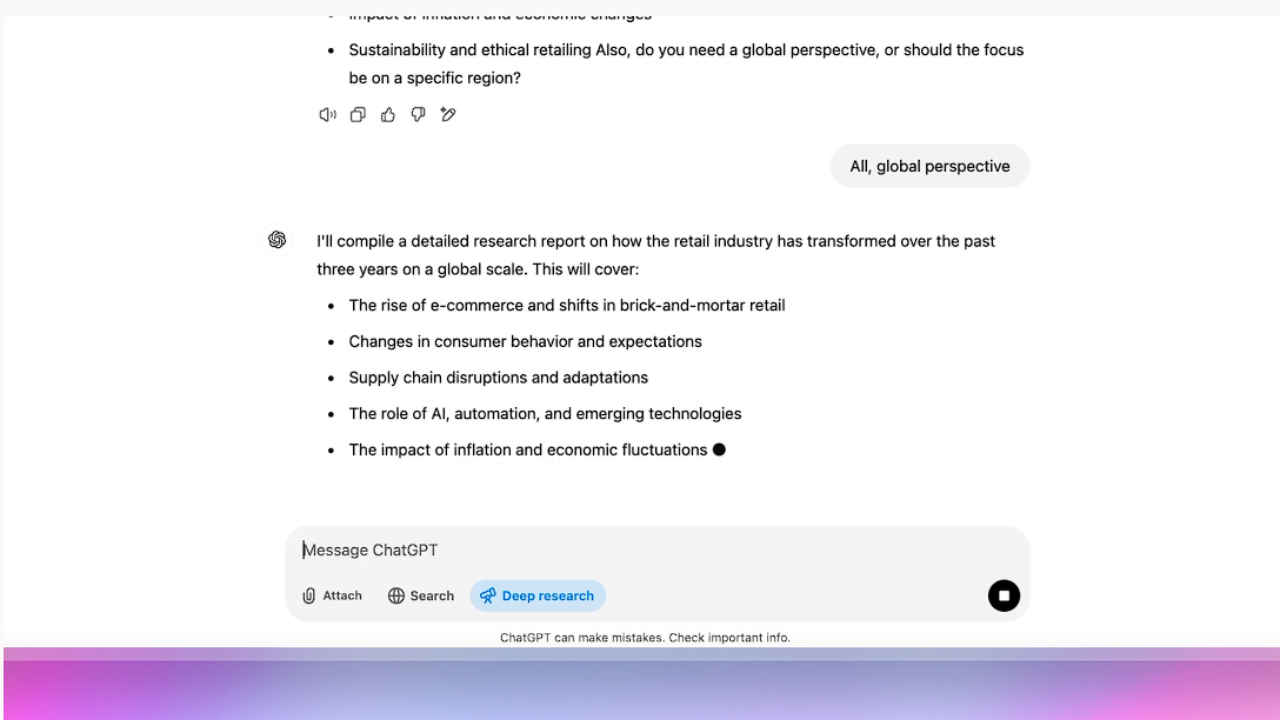OpenAI launches deep research in ChatGPT: What is it and how it works
OpenAI has introduced a new feature in ChatGPT called deep research.
According to OpenAI, deep research is built for finance, science, policy, and engineering professionals who require precise and reliable information.
However, it can also help everyday users with tasks like comparing products before making a purchase.

OpenAI has introduced a new feature in ChatGPT called deep research, designed to handle complex, multi-step online research. This advanced capability can analyse and summarise hundreds of online sources in a fraction of the time it would take a human. Keep reading for the details of OpenAI’s new agent.
 Survey
SurveyWhat is deep research in ChatGPT?
Deep research is OpenAI’s latest AI agent that works independently to conduct thorough research based on a user’s query. According to OpenAI, “It accomplishes in tens of minutes what would take a human many hours.” The feature is powered by a version of OpenAI’s o3 model, optimised for web browsing and data analysis.
Unlike regular ChatGPT responses, deep research digs through large amounts of data, including text, images, and PDFs available on the internet. It can also adjust its approach based on the information it finds, making it a powerful tool for those who need in-depth knowledge.
According to OpenAI, deep research is built for finance, science, policy, and engineering professionals who require precise and reliable information. However, it can also help everyday users with tasks like comparing products before making a purchase.
One of the standout features is its ability to find niche and non-intuitive information, often hidden across multiple sources. OpenAI explained in a blogpost, “every output is fully documented, with clear citations and a summary of its thinking, making it easy to reference and verify the information.”
“Deep research was trained using end-to-end reinforcement learning on hard browsing and reasoning tasks across a range of domains. Through that training, it learned to plan and execute a multi-step trajectory to find the data it needs, backtracking and reacting to real-time information where necessary,” the company said.
How to use deep research
Users can access deep research in ChatGPT by selecting it in the message composer. After entering a query—such as a competitive analysis on streaming platforms or a personalised report on the best commuter bike—the tool starts working.
A sidebar appears, showing the steps taken and sources used. The process can take anywhere from 5 to 30 minutes, after which the AI generates a detailed report. OpenAI says upcoming updates will include embedded images, data visualisations, and other analytic outputs for better clarity.
OpenAI acknowledged that deep research still has some flaws. “It can sometimes hallucinate facts in responses or make incorrect inferences,” the company admits, though it claims these errors are less frequent than with previous models.
Also read: OpenAI faces legal heat in India, here’s why
Availability
For now, deep research is available only to ChatGPT Pro users, with a limit of 100 queries per month. OpenAI plans to roll it out next to Plus and Team users, followed by Enterprise customers. A faster, more cost-effective version of deep research is also in development.
Ayushi Jain
Ayushi works as Chief Copy Editor at Digit, covering everything from breaking tech news to in-depth smartphone reviews. Prior to Digit, she was part of the editorial team at IANS. View Full Profile